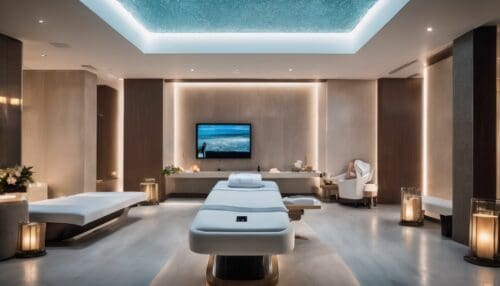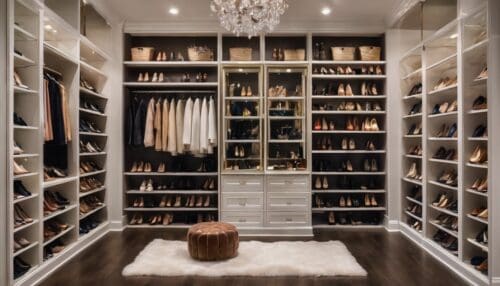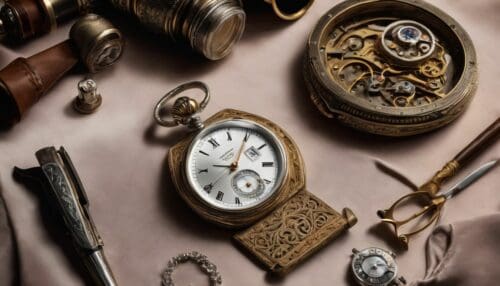Updated On: April 07, 2024 by Noha Basiony
Europe has a rich tapestry of history, culture, and monarchy. From luxurious palaces to majestic castles, Europe boasts many royal residences embodying the splendour and majesty of monarchies. These architectural marvels, steeped in centuries of tradition, continue to captivate and inspire visitors worldwide. Royal residences include elegant buildings and cultural, art, and history repositories. Preserving and maintaining these magnificent structures is a responsibility and an investment in the heritage of nations.
Europe boasts a wealth of royal residences that have withstood the test of time, bearing witness to the rise and fall of empires, political intrigue, and significant historical events. This article will delve into the enchanting world of royal residences in Europe, where they are, and what are the most luxurious ones.
What Is the Meaning of Royal Residence?

A royal residence refers to a dwelling or palace specifically designated for use by the royal family or monarchy members. It serves as the primary or secondary residence of a reigning monarch, a monarch’s immediate family, or other royal household members. Royal residences are typically grand, luxurious, and historically significant, reflecting the power and prestige associated with monarchy.
These residences may vary in size, architectural style, and level of luxury depending on a particular monarchy’s culture, history, and traditions. They range from magnificent palaces with vast grounds and numerous rooms to more modest castles or mansions. Some royal residences are renowned landmarks, attracting tourists and serving as symbols of national heritage.
Where Do Royal Families Live in Europe?

Royal European families reside in various palaces and residences, depending on the country. Here are some notable examples:
- United Kingdom: The British royal family resides in Buckingham Palace in London, the monarch’s official residence. Other royal residences include Windsor Castle (a weekend retreat and the oldest occupied castle in the world), Sandringham House (a private residence in Norfolk), and Balmoral Castle (a Scottish retreat).
- Spain: The Spanish royal family resides in the Royal Palace of Madrid as the official residence. They also have their primary residence in the Zarzuela Palace on Madrid’s outskirts.
- Sweden: The Swedish royal family resides in the Royal Palace of Stockholm, the official residence. They also have Drottningholm Palace, situated on an island near Stockholm, which serves as their private residence.
- Denmark: The Danish royal family resides in Amalienborg Palace, a complex of four identical palaces in Copenhagen. One of the palaces serves as the official residence of the monarch.
- Norway: The royal family resides in the Royal Palace in Oslo, the official residence. Skaugum Estate, located outside Oslo, is their private residence.
- Netherlands: The Dutch royal family resides in Huis ten Bosch Palace in The Hague the official residence. They also have Noordeinde Palace in The Hague, primarily used for official functions.
- Belgium: The royal family resides in the Royal Palace of Brussels, the official residence. They also have the Royal Castle of Laeken, situated on the outskirts of Brussels, which serves as their private residence.
- Monaco: The ruling family of Monaco resides in the Prince’s Palace of Monaco, situated on a rocky promontory overlooking the Mediterranean Sea.
There are many additional royal residences and palaces in other European countries with monarchies.
What Are Royal Residences in Europe?

Royal residences in Europe are prestigious and historically significant dwellings designated explicitly for use by members of royal families or monarchies. These residences serve as the primary or secondary homes of reigning monarchs, their immediate family members, and other royal household members. Royal residences can vary in size, architectural style, and level of luxury, reflecting each monarchy’s cultural and historical context; there are numerous notable royal residences. Some examples include:
- Buckingham Palace (United Kingdom): The principal residence of the British monarch located in London.
- Versailles Palace (France): A grand palace near Paris that served as the principal residence of French monarchs.
- Royal Palace of Madrid (Spain): The official residence of the Spanish royal family.
- Royal Palace of Stockholm (Sweden): The official residence of the Swedish monarch in Stockholm.
- Amalienborg Palace (Denmark): A complex of four palaces in Copenhagen, serving as the official residence of the Danish royal family.
- Royal Palace of Brussels (Belgium): The official residence of the Belgian monarch in Brussels.
- Royal Palace of Amsterdam (Netherlands): A palace in Amsterdam used for official functions by the Dutch royal family.
- Royal Palace of Oslo (Norway): The official residence of the Norwegian monarch in Oslo.
- Royal Palace of Monaco (Monaco): The residence of the ruling Prince of Monaco.
- The Imperial Palace in Tokyo: the main residence of the Emperor of Japan.
These are examples of the royal residences that can be found throughout Europe. Each royal family may also have additional residences and retreats within their own country and abroad, reflecting their historical connections and personal preferences.
What Is the Largest and Most Luxurious Royal Residence?

The largest and most luxurious royal residence in the world is considered to be the Palace of Versailles, located in Versailles, France. Originally built as a hunting lodge for King Louis XIII, it was transformed into an opulent palace by his son, King Louis XIV, in the 17th century.
Versailles Palace spans over 2,300 acres and features more than 2,300 rooms. The palace showcases exquisite architecture, extravagant decorations, and lavish furnishings. Its Hall of Mirrors is particularly famous, featuring 357 mirrors lining its walls. In addition, the palace is surrounded by meticulously landscaped gardens, fountains, and stunning outdoor spaces.
Versailles Palace served as the principal residence of the French monarchy from Louis XIV until the French Revolution. It symbolised absolute monarchy and remained an enduring royal grandeur and luxury icon.
While many other impressive royal residences worldwide, including Buckingham Palace in London and the Imperial Palace in Tokyo, Versailles Palace is renowned for its sheer scale, architectural splendour, and historical significance, making it the epitome of luxurious royal residences.
How Many Royal Residences Are in Europe?

The number of royal residences in Europe can vary depending on how one defines a “royal residence” and considers the different countries and their respective royal families. Europe has a rich history of monarchies, and many countries have multiple royal residences. While it is challenging to provide a specific number, numerous palaces, castles, and residences are associated with European royal families.
Some countries may have a primary official royal residence and secondary or seasonal residences. Additionally, there may be residences that are not actively used by the royal family but are still considered part of their heritage and history. Moreover, some royal families may also have residences outside their countries. However, dozens of significant royal residences are scattered throughout Europe, reflecting the continent’s rich royal heritage.
Why Do Royals Need Luxurious Residences?

The purpose of a royal residence goes beyond providing a place for the monarch and their family to live. These establishments often serve as the backdrop for state functions, official ceremonies, and diplomatic events. They may also house significant collections of art and historical artefacts or serve as cultural preservation and promotion centres. Royals often have luxurious residences for several reasons:
- Symbolism and Tradition: Luxurious residences symbolise power, wealth, and status. They reflect the historical legacy and tradition associated with monarchy. The luxury of royal residences reinforces the royal family’s image as a prestigious and influential institution.
- State Functions and Diplomacy: Royals host state functions, official ceremonies, and diplomatic events at their residences. These occasions require grand and impressive venues accommodating dignitaries, heads of state, and foreign diplomats. Luxurious residences provide the necessary space and ambience for such events.
- National Identity and Heritage: Royal residences are often significant cultural and historical landmarks of a nation. They showcase architectural styles, artistic treasures, and historical artefacts representing a country’s heritage. These residences are valued as part of a nation’s identity and are often open to the public, attracting tourists and contributing to the economy.
- Security and Privacy: Luxurious residences provide enhanced security measures, ensuring the royal family’s safety. They often have advanced security systems, trained personnel, and secure grounds for protecting the monarch and their immediate family.
- Comfort and Lifestyle: Royals require comfortable and well-equipped living spaces that cater to their lifestyle and specific needs. Luxurious residences offer ample space for family living, official duties, and recreation. In addition, they provide the necessary amenities, luxurious furnishings, and privacy that contribute to the well-being and comfort of the royal family.
The state or government often covers these residences’ maintenance and upkeep costs, as they are considered part of the infrastructure and responsibilities associated with the monarchy.
Europe’s royal residences are timeless reminders of a bygone era, captivating visitors with their architectural splendour and rich historical narratives. From the exquisite halls of Buckingham Palace in London to the romantic gardens of Versailles in France, these royal abodes have witnessed the ebb and flow of history, hosting grand ceremonies, political meetings, and private moments of the monarchs and their families. They serve as living testaments to the legacies of Europe’s royal families, showcasing architectural brilliance, artistic treasures, and cultural heritage.
Beyond their aesthetic allure, royal residences hold a deeper significance, representing national identity, tradition, and a sense of continuity. They are symbols of power, providing the stage for state functions and diplomatic engagements. These palaces and castles also open their doors to the public, inviting visitors to explore the rich history and experience the grandeur firsthand.











